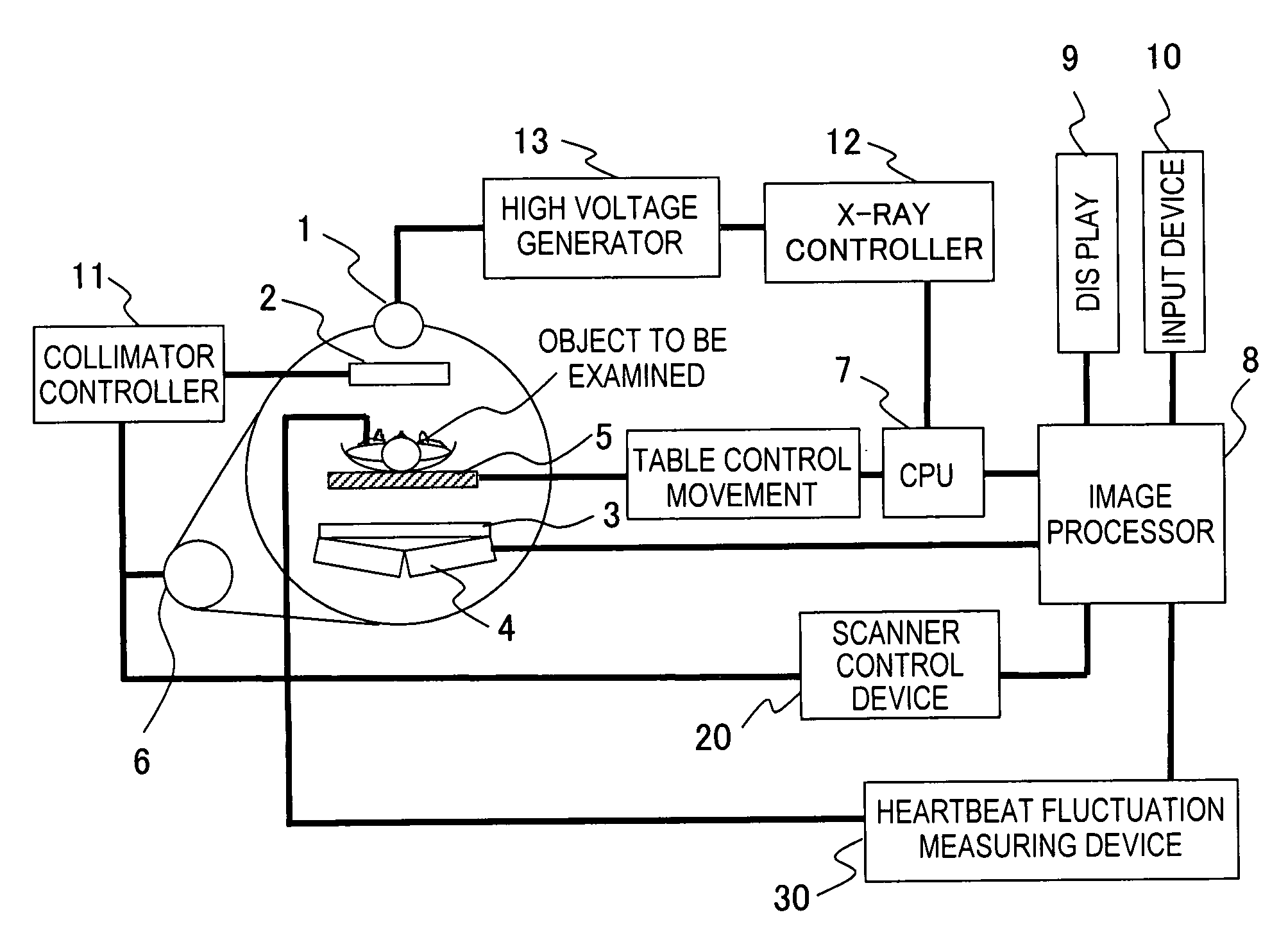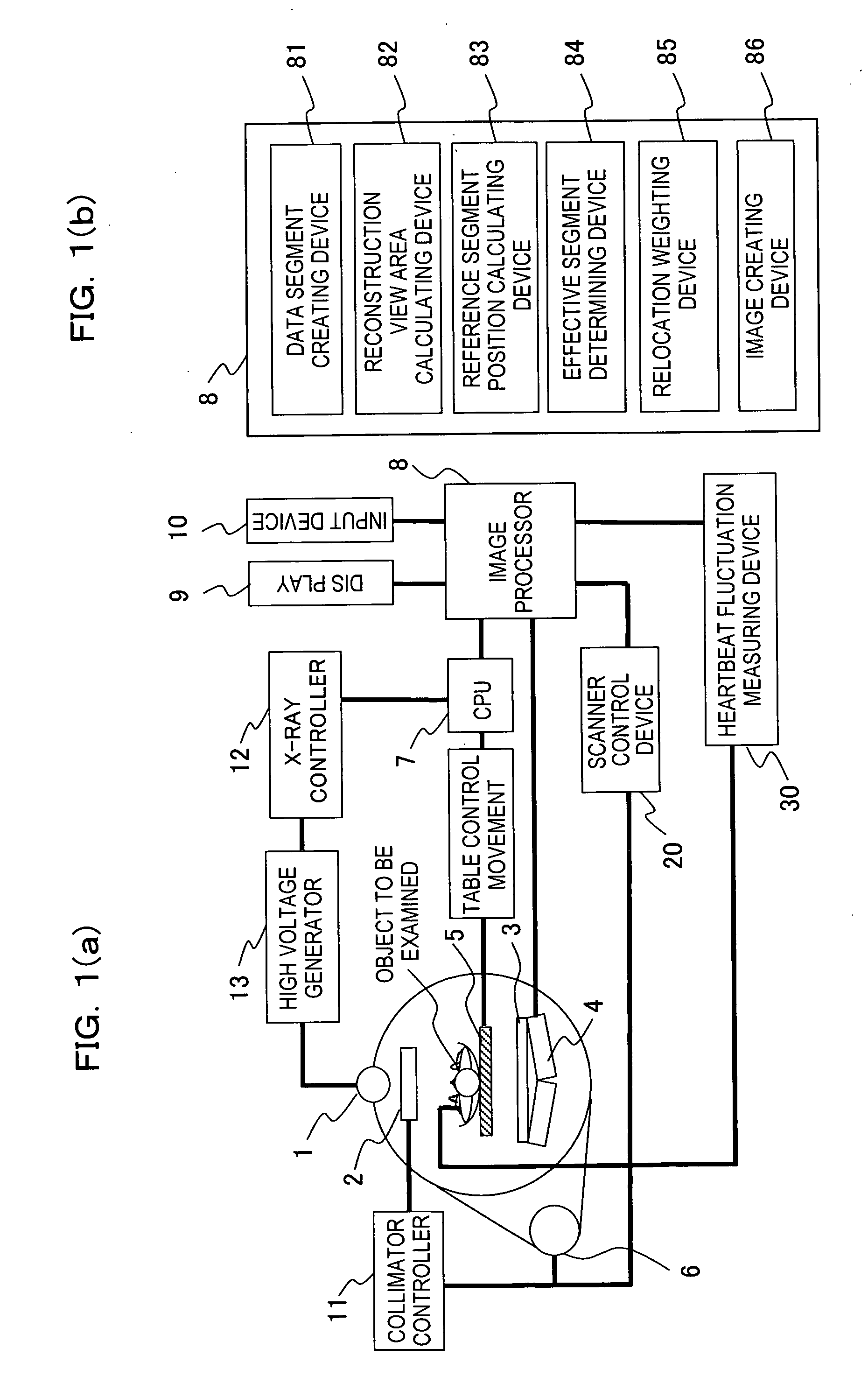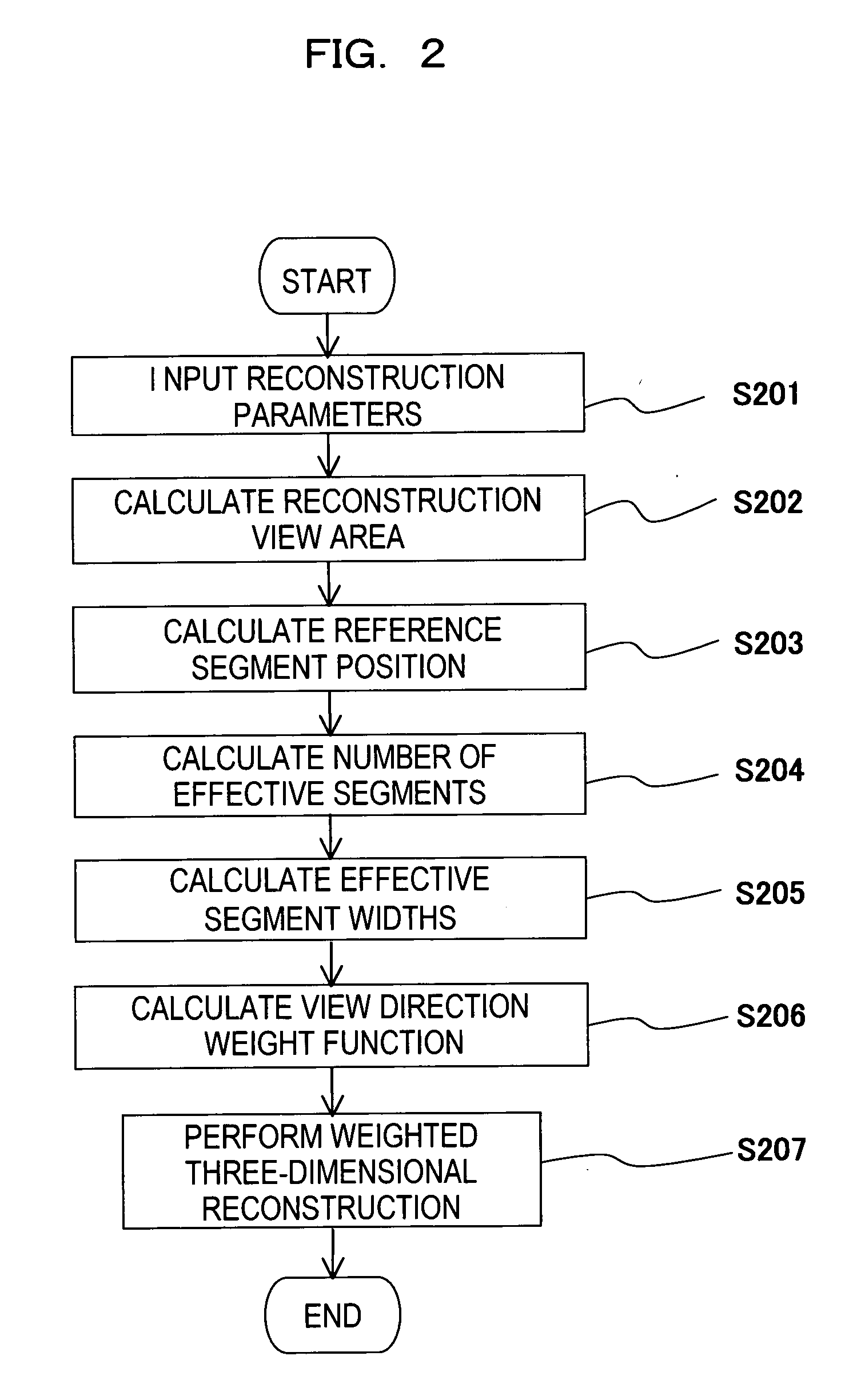Radiotomography apparatus
a technology of radiotomography and apparatus, applied in the field of radiotomography apparatus, can solve the problems of decreasing the utilization rate of those segments, increasing reducing the time resolution, so as to reduce the ineffective radiation exposure of objects, enhance spatial resolution or temporal resolution, and improve the effect of temporal resolution
- Summary
- Abstract
- Description
- Claims
- Application Information
AI Technical Summary
Benefits of technology
Problems solved by technology
Method used
Image
Examples
first embodiment
[0082]FIG. 1 is an overall configuration view that illustrates a multislice X-ray CT apparatus using a cone beam X-ray that is one example of an X-ray CT apparatus according to this invention. The X-ray CT apparatus shown in FIG. 1 employs the so-called rotate-rotate (third generation) scanning method.
[0083] The X-ray CT apparatus shown in FIG. 1 comprises an X-ray tube 1, a collimator 2, an X-ray detector 3 as X-ray detecting device, a preamplifier 4, a table 5, a rotational driving apparatus 6 that implements a predetermined scanning speed, a central control unit (CPU) 7, an image processor 8, a display 9, an input device 10, a collimator controller 11, an X-ray controller 12, a high voltage generator 13, a scanner control device 20 and a heartbeat fluctuation measuring device 30. However, the heartbeat fluctuation measuring device 30 need not necessarily be included in the configuration of the X-ray CT apparatus according to this invention, and it is sufficient that it can be co...
second embodiment
[0155] The second embodiment follows substantially the same procedures from step S201 to step S204 in FIG. 2 as described in the first embodiment. Consequently, unless specifically stated otherwise, the reference symbols used for this embodiment are the same as those used in Embodiment 1. While according to the first embodiment the relocation relating to FIG. 6 was related to full reconstruction performed in a 2π (360°) area, in Embodiment 2 half reconstruction is performed in a π (180°) area. Hereunder, Embodiment 2 is described with reference to FIG. 2 and FIG. 13.
[0156] In step S205 in FIG. 2, a segment width is calculated. First, it is assumed that up to step S204, X-ray transmission data as shown in FIG. 13(a) was obtained. Reference segment positions 65 to 69 shown in FIG. 13(a) are, for example, segment data that correspond to the reference segment positions 61 to 65 that were recognized as effective segment positions in FIG. 5. In this case, L0 and L1 are the starting edge ...
third embodiment
[0163] Although the processing of step S202 in the third embodiment is different to that of the first embodiment, the other steps are the same as those of the first embodiment and therefore a description of those steps is omitted. Hereunder, the difference with the first embodiment is described. Unless specifically stated otherwise, the reference numerals used correspond to the parts that are the same as in the first embodiment.
[0164] Although in the prior art the segments to be used for reconstruction are uniformly determined for the entire tomogram, and in the first embodiment the reconstruction view area 70 was calculated according to the FOV, according to the present embodiment the reconstruction view area 70 is calculated for each pixel.
[0165] In FIGS. 3(a) and (b), when a reconstruction pixel position is taken as I (xi,yi,zi), the position of an X-ray source is taken as S (xs,ys,zs), and row denotes the number of rows of the detector, the width R [rad] of a reconstruction vi...
PUM
 Login to View More
Login to View More Abstract
Description
Claims
Application Information
 Login to View More
Login to View More - R&D
- Intellectual Property
- Life Sciences
- Materials
- Tech Scout
- Unparalleled Data Quality
- Higher Quality Content
- 60% Fewer Hallucinations
Browse by: Latest US Patents, China's latest patents, Technical Efficacy Thesaurus, Application Domain, Technology Topic, Popular Technical Reports.
© 2025 PatSnap. All rights reserved.Legal|Privacy policy|Modern Slavery Act Transparency Statement|Sitemap|About US| Contact US: help@patsnap.com



